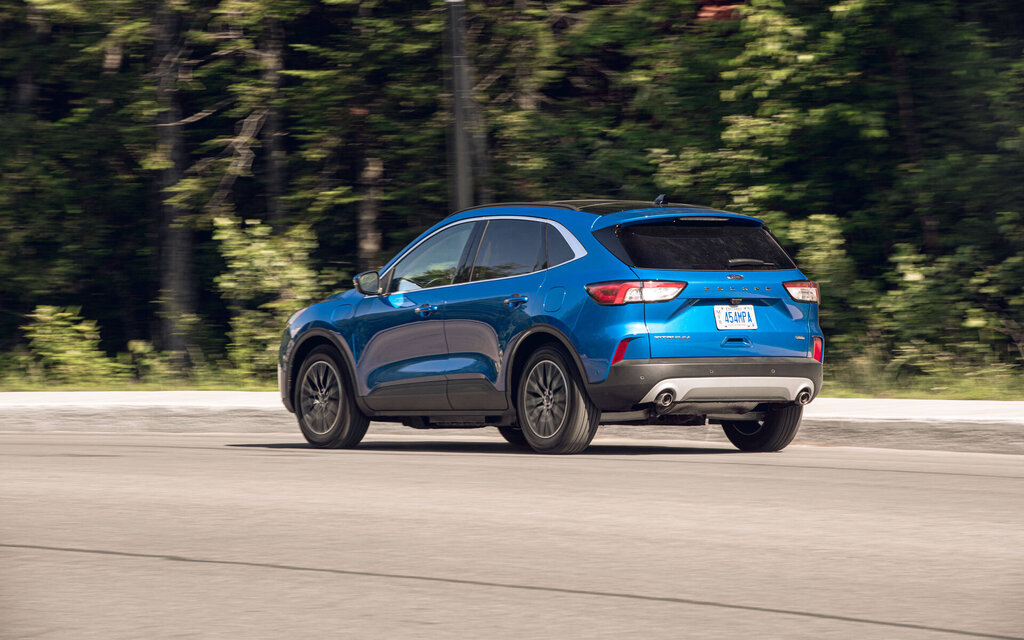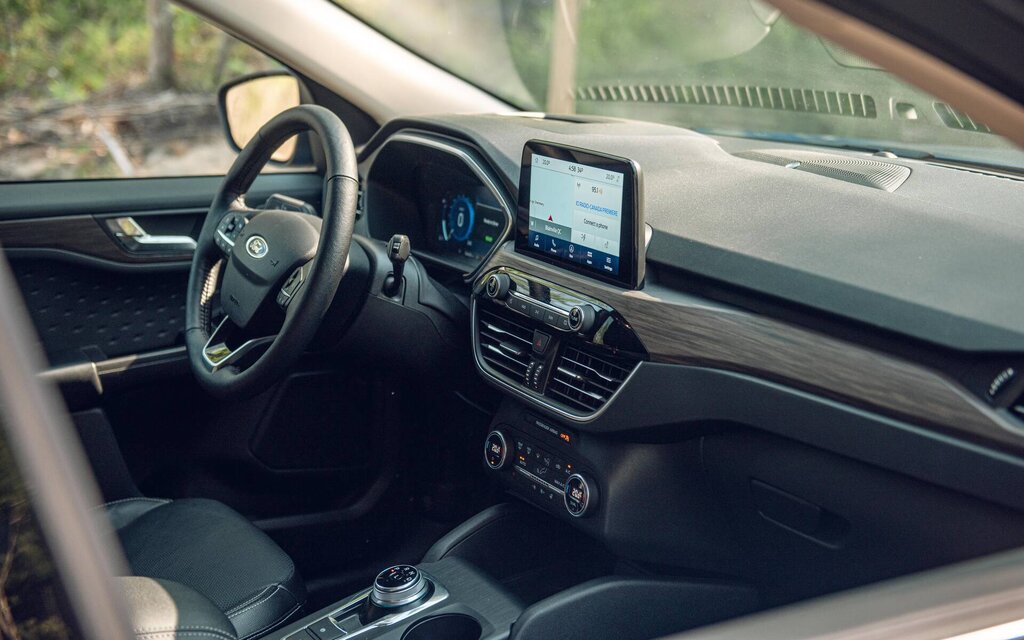With the new generation of its Escape, Ford has struck a blow by integrating a plug-in hybrid variant, which will be able to cover more than sixty kilometers in electric mode. It took a long time, but this eagerly awaited model is finally arriving in dealerships!
Expected for 2020, the Ford Escape PHEV (for Plug-in Hybrid Electric Vehicle) will have finally been almost a year late. Ford blames COVID-19, but let’s say this crisis has a broad back among some automakers …
Never mind, the team of Car guide had managed to get his hands on a preproduction PHEV Escape. We were able to test this highly anticipated model and compare it to its two main rivals, the Toyota RAV4 Prime and the Mitsubishi Outlander PHEV, in a comparison match published in The Car Guide 2021.
Alongside this test, here are our driving impressions of the 2021 Ford Escape PHEV.
Photo: Guillaume Fournier Photographer
The cheapest of its breed
It should be noted from the outset that the Ford Escape PHEV will be sold at a price significantly lower than that of the two rivals mentioned above. While the RAV4 Prime and Outlander PHEV are listed at starting prices just below the $ 45,000 mark, Ford is announcing a starting price of $ 37,649 for its Escape PHEV. The vehicle is also eligible for government credits of $ 6,500, which is as much as the Outlander PHEV, but less than the RAV4 Prime ($ 13,000).
This attractive price is partly explained by the fact that the Escape PHEV is only available with a front-wheel drive architecture. A rather surprising decision, considering that competing models offer all-wheel drive as standard. Even the “regular” Escape Hybrid can be delivered with all-wheel drive.
In Quebec, this Ford decision will certainly have a negative impact. That being said, a two-wheel drive vehicle with good winter tires can do a lot of the job for the majority of motorists.
An interesting autonomy
Powered by a 2.5-liter four-cylinder engine, the Escape PHEV also uses an electric motor that draws its power from a 14.4 kWh lithium-ion battery. This allows the American SUV to cover an official distance of 60 kilometers in all-electric mode.
During our test on a hot summer day, we were able to exceed this figure, eventually covering a total of 66 kilometers before the gasoline engine took over. It’s better than what was seen with the Mitsubishi Outlander PHEV (37.9 km), but the Toyota RAV4 Prime wins with an electric distance traveled of 72.8 km. Note that the three vehicles followed exactly the same route in identical weather conditions.
When the electrical reserves are flat, the heat engine of the Escape PHEV is quite energetic, but above all very frugal. With an average recorded consumption of 5.6 L / 100 km (not considering the distance traveled in electric mode), the Escape PHEV proved to be the least fuel-efficient model of the trio. In short, even when the batteries are dead, the Escape PHEV remains a vehicle that can be driven without having to worry too much about the price of gasoline.

Photo: Guillaume Fournier Photographer
A convincing essay
Our day behind the wheel of the Escape PHEV has shown us that it is the most attractive variant in the model lineup. Offered at a reasonable price and eligible for an attractive subsidy, the PHEV won’t cost you much more than a well-equipped traditional Escape, while allowing you to hardly ever refuel. Happiness!
On the road, the Ford Escape PHEV impresses with a fairly nervous behavior. Lighter than the Mitsubishi Outlander PHEV and Toyota RAV4 Prime, it shows maneuverability and its acceleration is appreciable, although less impressive than those of the RAV4 Prime and its 302 horsepower!
The model tested was a Titanium version, the most premium of the lot, with a price tag of $ 43,749. In short, we had on hand a model equipped “to the plug” with a particularly advanced technological integration including a fully digital dashboard behind the wheel, an automatic parking system and wireless charging for cell phones.

Photo: Guillaume Fournier Photographer
In the center of the passenger compartment, a good-sized screen is strangely integrated over the console, as if we had stupidly stuck an iPad there. We’ll come back for the presentation, but there is nothing wrong with the user-friendliness of the SYNC infotainment system.
The support of the seats is acceptable and the storage space in the front is not lacking. Ford has managed to free up a lot of space by replacing the traditional transmission lever with a less bulky lever.
Room for rear passengers is okay, but taller ones might find the legroom a bit tight. The cargo space in the trunk is very reasonable for a vehicle of this size and the PHEV variant is not handicapped at this level compared to other versions of the Escape.

Photo: Guillaume Fournier Photographer
So which one to choose?
Although our team was impressed with the performance of the Ford Escape PHEV, it was unable to beat the Toyota RAV4 Prime in the comparison match of the Car Guide 2021. Better autonomy and improved performance will have played in favor of the Japanese SUV.
The catch is, the wait time to get your hands on a RAV4 Prime is just ridiculous. We’re talking about at least a year and a half if you give your name today! After the long delays that we have known, we must now hope that delivery times are more reasonable at Ford.
www.guideautoweb.com